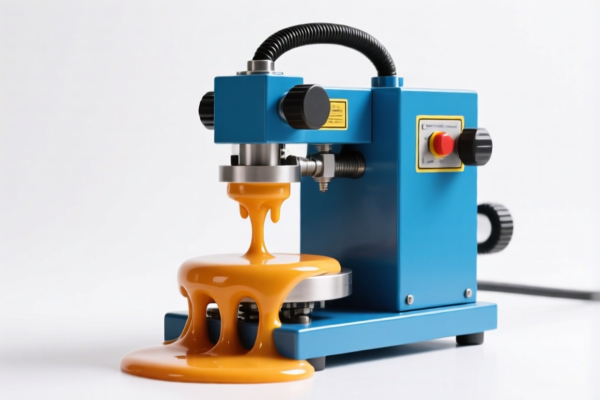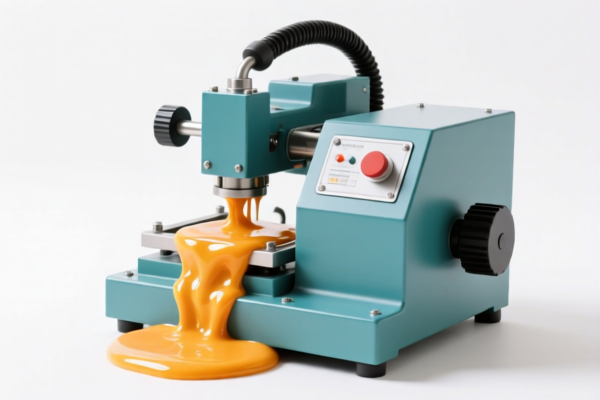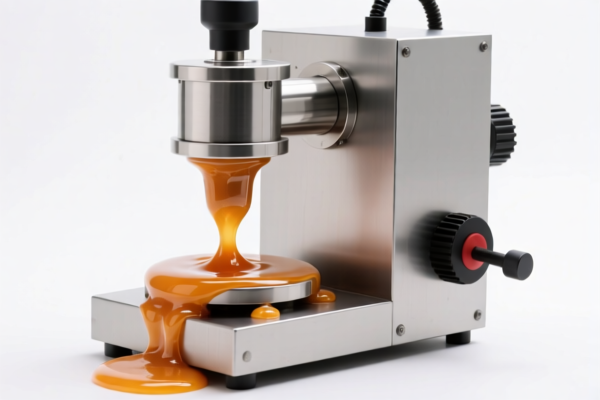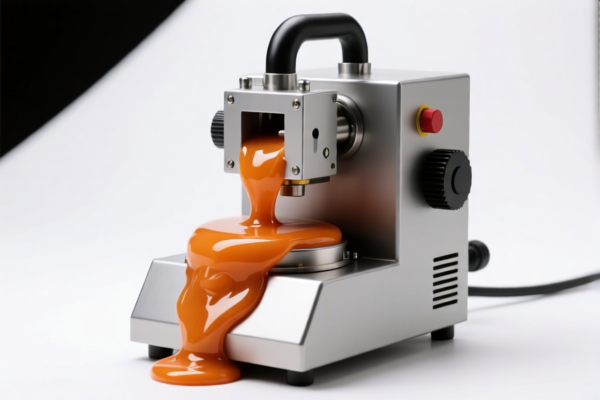| HS Code | Official Doc | Tariff Rate | Origin | Destination | Effective Date |
|---|---|---|---|---|---|
| 8419896000 | Doc | 55.0% | CN | US | 2025-05-12 |
| 8419899580 | Doc | 59.2% | CN | US | 2025-05-12 |
| 8514110000 | Doc | 55.0% | CN | US | 2025-05-12 |
| 8514400000 | Doc | 55.0% | CN | US | 2025-05-12 |
| 8439300000 | Doc | 55.0% | CN | US | 2025-05-12 |
| 8439200010 | Doc | 55.0% | CN | US | 2025-05-12 |
| 8454100000 | Doc | 55.0% | CN | US | 2025-05-12 |
| 8454300090 | Doc | 55.0% | CN | US | 2025-05-12 |
| 7326908688 | Doc | 82.9% | CN | US | 2025-05-12 |




Melting Machine
A melting machine is a device used to transform a solid substance into a liquid state by applying heat. These machines are employed across a diverse range of industries and applications, utilizing various heat sources and configurations to suit specific material properties and desired output.
Materials Processed
Melting machines handle a wide spectrum of materials, including:
- Metals: Aluminum, steel, copper, gold, silver, lead, tin, zinc, alloys. This is arguably the most common application.
- Plastics: Polyethylene (PE), polypropylene (PP), polyvinyl chloride (PVC), polystyrene (PS), and other thermoplastics.
- Glass: Silica-based glass, borosilicate glass, specialized glass formulations.
- Waxes: Paraffin wax, beeswax, microcrystalline wax, synthetic waxes.
- Other Substances: Certain salts, sulfur, and other compounds with relatively low melting points.
Purpose and Function
The primary purpose of a melting machine is to achieve a phase change from solid to liquid. This is done for several reasons:
- Casting & Molding: Liquid materials are poured or injected into molds to create desired shapes.
- Alloying: Combining different metals in a molten state to create alloys with specific properties.
- Refining: Removing impurities from a molten metal through processes like skimming or fluxing.
- Recycling: Reprocessing scrap materials by melting them down for reuse.
- Formulation: Combining different materials in a liquid state to create mixtures with desired characteristics (e.g., plastic blends).
- Preparation for Chemical Reactions: Providing a liquid medium for chemical processes.
Usage Scenarios
- Foundries: Melting metals for casting engine blocks, pipes, valves, and other metal components.
- Recycling Plants: Processing scrap metal, plastics, and other materials for reuse.
- Plastic Manufacturing: Melting plastic resins for injection molding, extrusion, and other plastic forming processes.
- Jewelry Making: Melting precious metals (gold, silver, platinum) for casting jewelry pieces.
- Glass Production: Melting glass batches for forming bottles, windows, and other glass products.
- Chemical Industry: Melting various compounds for chemical reactions and processing.
- Soap & Candle Making: Melting waxes and other ingredients for producing soaps and candles.
- Research & Development: Small-scale melting for material testing and experimentation.
Common Types
- Furnace-Type Melting Machines: These utilize a contained chamber heated by various sources.
- Induction Furnaces: Use electromagnetic induction to generate heat directly within the metal, offering precise temperature control and rapid melting. Common for metals.
- Crucible Furnaces: Heat a crucible containing the material, typically using gas, oil, or electricity. Versatile for various materials.
- Reverberatory Furnaces: Use radiant heat from a flame to melt the material. Suitable for large volumes of metal.
- Pot Melters: Smaller, self-contained units often used for melting smaller quantities of materials like wax, plastic, or low-melting-point metals.
- Extrusion Melters: Specifically designed for melting and extruding plastics.
- Injection Molding Machines: While primarily molding machines, they incorporate melting units to plasticize the resin before injection.
- Holding Furnaces: Maintain molten materials at a specific temperature for a period of time.
- Tilting Furnaces: Allow for easy pouring of molten material.
Key Considerations
- Material Compatibility: The melting machine must be constructed from materials that won’t react with the substance being melted.
- Temperature Control: Precise temperature control is critical for many applications.
- Safety Features: Melting machines operate at high temperatures and can pose significant safety hazards. Features like protective shielding, temperature alarms, and emergency shutdown systems are essential.
- Capacity: The machine's capacity must be appropriate for the volume of material being processed.
- Energy Efficiency: Energy consumption can be a significant cost factor.
- Automation: Some melting machines are fully automated, while others require manual operation.
Based on the provided information, the following HS codes may be relevant to a “melting machine”:
-
8419896000: Machinery, plant or laboratory equipment, whether or not electrically heated (excluding furnaces, ovens and other equipment of heading 8514), for the treatment of materials by a process involving a change of temperature such as heating, cooking, roasting, distilling, rectifying, sterilizing, pasteurizing, steaming, drying, evaporating, vaporizing, condensing or cooling, other than machinery or plant of a kind used for domestic purposes; instantaneous or storage water heaters, nonelectric; parts thereof: Other machinery, plant or equipment: Other: Other: Molten-salt-cooled acrylic acid reactors.
- 84: Steam engines and parts thereof; steam boilers, auxiliary plant for such boilers; nuclear reactors and auxiliary plant therefor.
- 19: Machinery, plant or equipment for the treatment of materials by a process involving a change of temperature.
- 89: Other machinery, plant or equipment.
- 60: Other: Other: Molten-salt-cooled acrylic acid reactors. This code specifically covers machinery for material treatment involving temperature changes, and includes molten-salt-cooled acrylic acid reactors as an example.
-
8419899580: Machinery, plant or laboratory equipment, whether or not electrically heated (excluding furnaces, ovens and other equipment of heading 8514), for the treatment of materials by a process involving a change of temperature such as heating, cooking, roasting, distilling, rectifying, sterilizing, pasteurizing, steaming, drying, evaporating, vaporizing, condensing or cooling, other than machinery or plant of a kind used for domestic purposes; instantaneous or storage water heaters, nonelectric; parts thereof: Other machinery, plant or equipment: Other: Other Other: For rubber and plastics.
- 84: Steam engines and parts thereof; steam boilers, auxiliary plant for such boilers; nuclear reactors and auxiliary plant therefor.
- 19: Machinery, plant or equipment for the treatment of materials by a process involving a change of temperature.
- 89: Other machinery, plant or equipment.
- 95: Other: Other Other: For rubber and plastics. This code covers machinery for material treatment involving temperature changes, specifically for rubber and plastics.
-
8514110000: Industrial or laboratory electric furnaces and ovens (including those functioning by induction or dielectric loss); other industrial or laboratory equipment for the heat treatment of materials by induction or dielectric loss; parts thereof: Resistance heated furnaces and ovens: Hot isostatic presses.
- 85: Electrical machinery and equipment.
- 14: Industrial or laboratory electric furnaces and ovens.
- 11: Resistance heated furnaces and ovens: Hot isostatic presses. This code specifically covers resistance heated furnaces and ovens, including hot isostatic presses.
-
8514400000: Industrial or laboratory electric furnaces and ovens (including those functioning by induction or dielectric loss); other industrial or laboratory equipment for the heat treatment of materials by induction or dielectric loss; parts thereof: Other equipment for the heat treatment of materials by induction or dielectric loss.
- 85: Electrical machinery and equipment.
- 14: Industrial or laboratory electric furnaces and ovens.
- 40: Other equipment for the heat treatment of materials by induction or dielectric loss. This code covers other electric equipment for heat treatment.
Tax Rate Information:
All of the above HS codes have the following tax details:
- Basic Tariff: 0.0%
- Additional Tariff: 25.0%
- Additional Tariff (after April 2, 2025): 30.0%
- Total Tariff: 55.0% (currently)
Important Note:
Please carefully consider the specific function and application of the melting machine to determine the most accurate HS code. If the machine is electrically heated, codes 8514110000 or 8514400000 may be more appropriate. If it is not electrically heated, codes 8419896000 or 8419899580 should be considered.
Customer Reviews
No reviews yet.